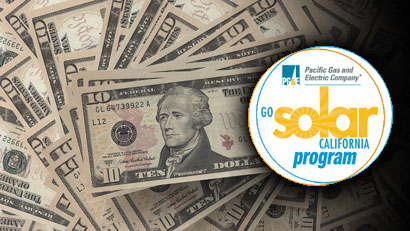(Or, Oh-My-Goodness, What Are Those Panels On The Roof Worth?!)
The installation of residential solar PV electric systems in California has been roughly doubling every year since 2012. Typical system life is estimated at a minimum of 25-years. As more homes with installed systems come to market, agents and sellers who fully articulate the significant value of the solar amenity will receive the best return.
The situation is complicated by an extensive market penetration of leased systems. While a similar number of households still choose to buy, the “power of zero” investment scenarios marketed with leasing have more recently appealed to the majority. In short, leased systems (as you may know) are often an impediment to sale and close of escrow. The smartest seller and agent will resolve this situation (as with any lien) well ahead of going on-market and appraisal.
Relevant Pricing Factors:
The value of electricity produced continues to rise over time. Electric rates in California are escalating and compounding faster than the 20-year PG&E average of 6.7%, and that is likely to be the case for some time. In 2014 & 2015, PG&E raised the formerly “protected” pricing Tiers 1&2—where more than 80% of overall use lies—by 30%!
On the other hand, the cost of installation has dropped around 40% in the past 2-1/2 years.
A 2015 LBL/DOE Solar Valuation Report suggests a general resale value in California of $4 per kW size rating…even though all similarly described systems, inverters and panels are not equal in output!
We will work through the implications of these facts shortly. Here’s a scenario analysis tool:
CODE RED–Leased systems. Not appraised or valued as part of the home! There is a lien on the home binding the system to the seller, which must be cleared or transferred before escrow closes, preferably earlier! As you are probably aware, while qualifying for a home loan, it is NOT a good time to engage in another major financial obligation (lease assumption by buyer).
The best advice is to clear the lien before listing. This inconveniently requires cash. The seller is also likely to suffer a loss due to:
Unfavorable buyout pricing (especially in the first 5-1/2 years, while the leasing company takes depreciation).
Devalued by the price of a comparable replacement system today.
Lack of attention to quality of equipment.
Owning solar is more financially advantageous.
However, once owned, the system is appraised as part of the property.
CODE YELLOW–Any system more than 2-years old.
“Modern” systems not only reflect a substantially lower cost of installation, but also importantly include WIFI monitoring. Using a web browser, we can see totals of actual kilowatt hours (kWh) produced daily, monthly and year-over-year.
Without this, reading the PG&E bills is like reading tea leaves. 2 prior residents could have used 1/3 the energy that 6 will in the future, so the billing information, while useful, only tells us about the past owners, not the future. With WIFI monitoring, we can see a record of the actual kWh produced historically, print reports, and then compute their estimated minimum value.
Age of system affects the inverter(s) more than the panels. Standard inverters (a box that generally is mounted next to the panel box) have a lifespan of 10-15 years before replacement. Most MicroInverters (individually mounted on each panel) are not only more efficient, but are warranted for 25-years.
CODE GREEN– is how the “modern systems” play out; generally again, those installed in the last 2 years. With quality equipment, a 10-year workmanship warranty and a clear picture of how much electricity is being produced, the solar electric amenity can be more accurately—and highly—valued.
SUMMARY: Current utility and installation costs now allow probable recovery of the solar electric investment at sale. Older systems are harder to figure out. Leased systems, as with PACE tax liens (SCEIP), add complexity to the transaction. The good news is that solar, with quantified value, is an attractive amenity to many, and if installed today, is a recoverable asset upon sale!



